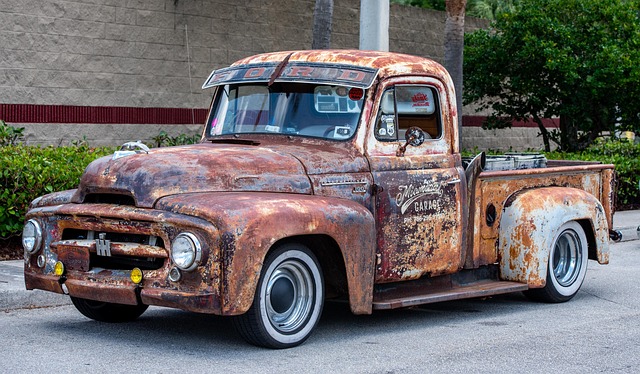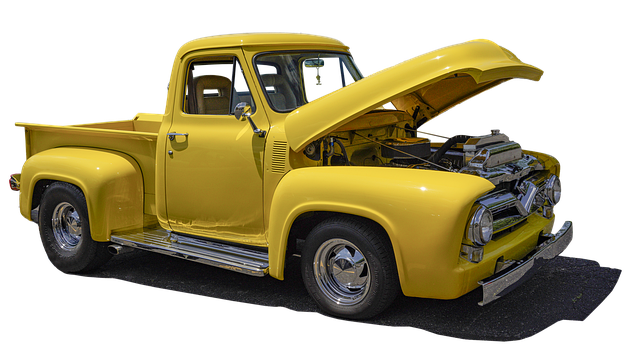Looking to register your car in California? This comprehensive guide walks you through every step, from understanding key requirements to securing your registration. First, grasp the essential rules and documents needed for a smooth process at the DMV. Next, learn how to conduct a crucial dmv vin verification, ensuring your vehicle’s authenticity. Then, complete the application, pay fees, and obtain your California registration plate and necessary papers.
- Understand California Car Registration Requirements
- Gather Necessary Documents for DMV Visit
- Perform Vehicle Identification Number (VIN) Verification
- Complete Application and Pay Fees at DMV
- Receive Your California Registration Plate & Documents
Understand California Car Registration Requirements

Before registering your car in California, it’s crucial to understand the state’s specific requirements for vehicle identification number (VIN) verification. The California Department of Motor Vehicles (DMV) mandates that all vehicles undergoing registration must undergo a thorough VIN inspection to ensure authenticity and prevent theft. This process involves checking the VIN against national databases to confirm its history, ensuring it hasn’t been reported stolen or had previous title issues.
One convenient way to accomplish this is through a mobile VIN verifier or mobile VIN inspection service. These services offer on-demand, location-based VIN checks using advanced technology and real-time data access. By employing a mobile VIN verification tool, you can streamline the registration process by eliminating the need for lengthy visits to DMV offices or waiting in line for inspections. This not only saves time but also provides peace of mind when registering your vehicle in California.
Gather Necessary Documents for DMV Visit

Before visiting the DMV to register your car in California, ensure you have all the required documents ready. This process is designed to verify your vehicle’s history and ensure it meets safety standards, which includes a critical dmv vin verification. Gather the following essential paperwork: your vehicle registration certificate from the previous state (if applicable), proof of insurance, title or bill of sale, and your valid driver’s license. Additionally, you might need a mobile vin verifier to expedite the inspection process if any discrepancies arise during the vin inspection.
Remember to check the DMV’s website for specific guidelines regarding document requirements, as some may have additional steps based on the type of vehicle or its age. This preparation will help ensure a smoother experience and faster processing during your visit.
Perform Vehicle Identification Number (VIN) Verification

Before registering your car in California, it’s crucial to have your Vehicle Identification Number (VIN) verified. This process ensures that the vehicle matches the information on record and is essential for ensuring safety standards. You can perform a VIN verification through a mobile vin verifier or by visiting a DMV office.
A mobile vin inspection offers convenience, allowing you to complete the verification step at your own pace. Alternatively, many California DMV offices provide services for on-site VIN inspections. This step is critical as it helps prevent fraud and ensures that the car’s history aligns with what’s being claimed. Always ensure a thorough vin inspection before finalizing the registration process.
Complete Application and Pay Fees at DMV

To register your car in California, the first step is to complete the necessary application at the Department of Motor Vehicles (DMV) office or online. You’ll need to provide key information like your personal details, vehicle description, and proof of insurance. Additionally, you must undergo a DMV VIN verification process, which involves checking the vehicle’s unique identifier (VIN) for any discrepancies. This is crucial in ensuring that the car is not stolen or has outstanding issues.
Once your application is ready, submit it along with the required fees. These include registration fees, title transfer charges, and possibly other taxes. You can pay these using various methods accepted by the DMV, such as cash, check, or debit/credit cards. After processing, you’ll receive your vehicle’s registration and a valid California license plate, allowing you to legally operate your car on state roads. Don’t forget that keeping your documentation up-to-date is essential, and you may also consider using a mobile VIN verifier for added convenience during future inspections.
Receive Your California Registration Plate & Documents

After submitting your application for car registration at the DMV, it’s time to receive your new California registration plate and other essential documents. This crucial step involves a series of procedures designed to ensure vehicle authenticity and compliance with state regulations. One vital aspect is the DMV vin verification, which checks the vehicle identification number (VIN) to confirm the car’s history and specifications.
This process can often be facilitated through mobile vin inspection or mobile vin verification services, offering convenience by allowing you to complete this requirement from the comfort of your home or location of choice. Once verified, along with your registration documents, you’ll have everything needed to display your new California license plate on your vehicle, legally registering it for road use within the state.
Registering a car in California involves understanding state requirements, gathering essential documents, and completing a straightforward process at the Department of Motor Vehicles (DMV). After performing a DMV VIN verification and ensuring all paperwork is in order, you’ll receive your California registration plate and necessary documents. This crucial step not only legalizes your vehicle but also enhances safety and convenience on California’s roads.
